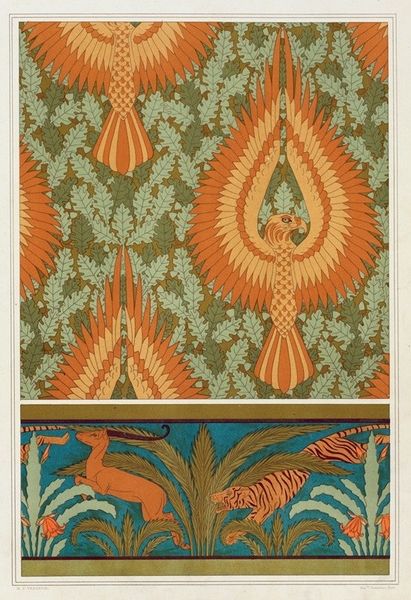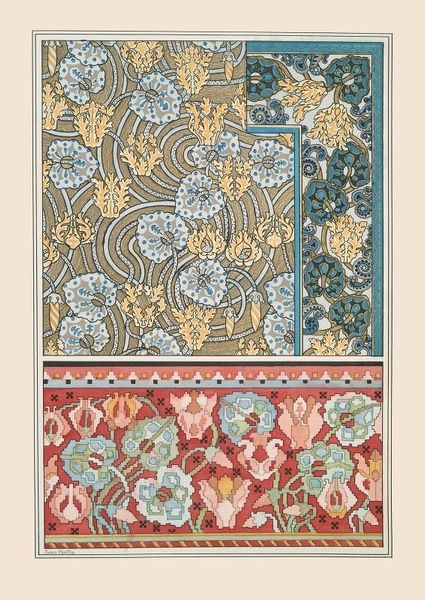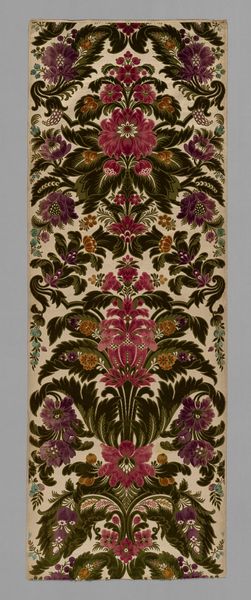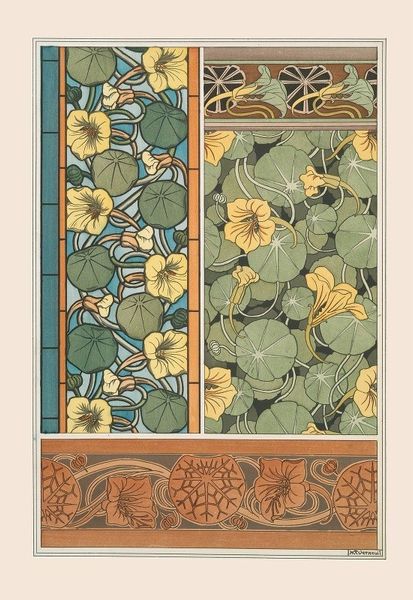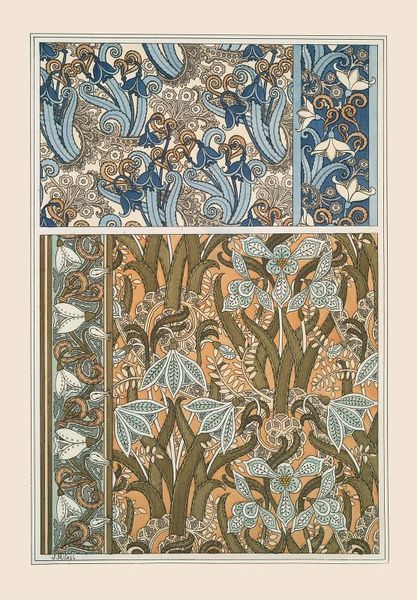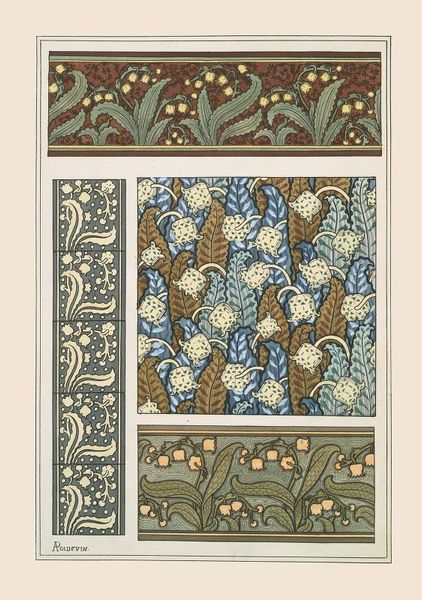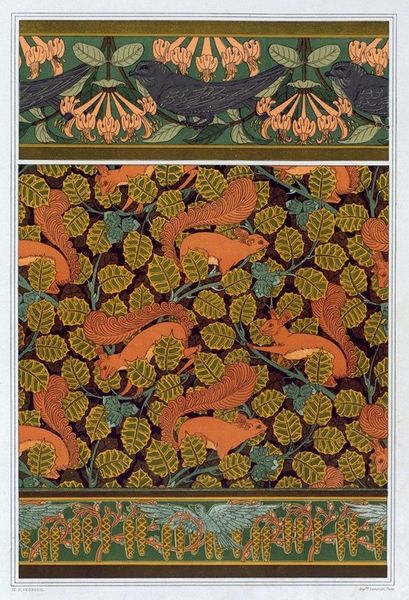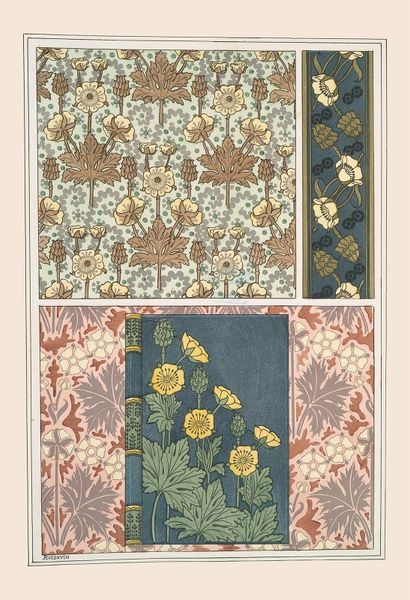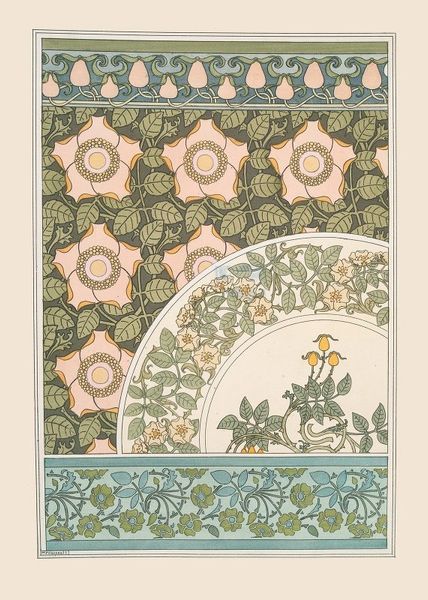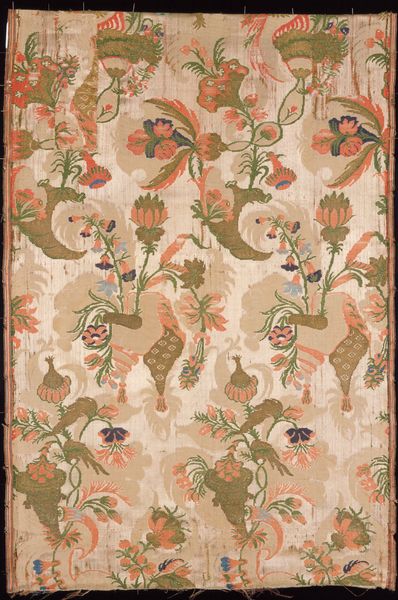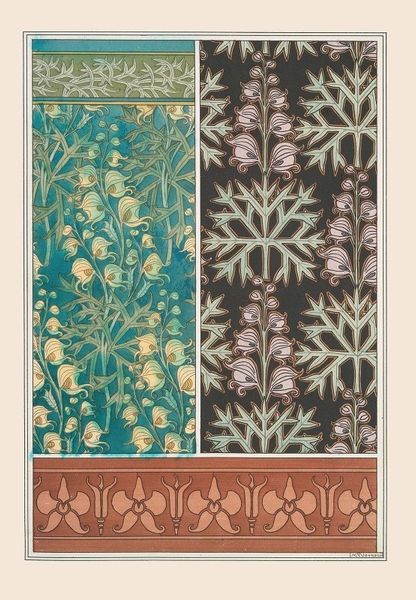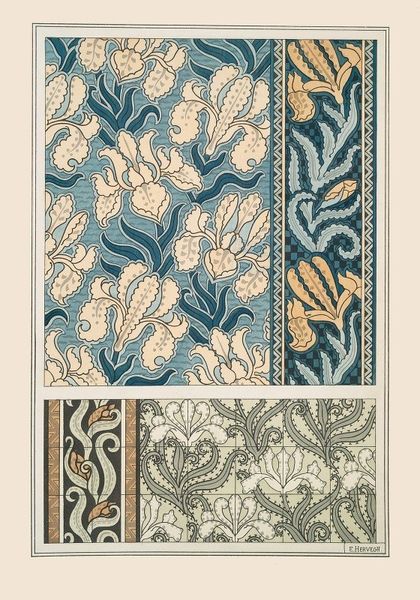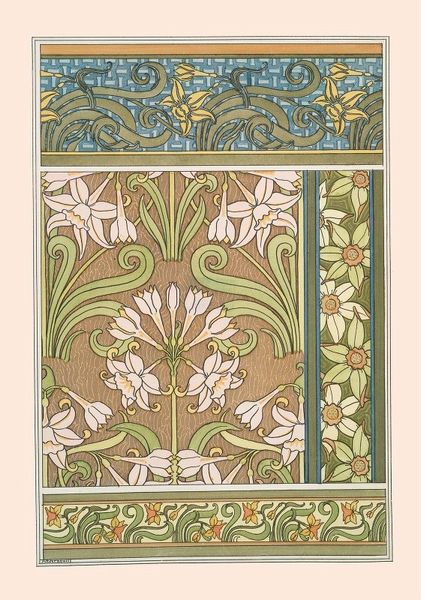
Huppes et stramoine, bordure. Papillons, étoffe de soie. Kangourou et arbres, bordure. 1897
0:00
0:00
drawing, print, poster
#
drawing
#
naturalistic pattern
#
organic
#
art-nouveau
# print
#
landscape
#
abstract pattern
#
organic pattern
#
decorative-art
#
poster
Copyright: Public Domain: Artvee
Curator: Ah, Verneuil's "Huppes et stramoine, bordure. Papillons, étoffe de soie. Kangourou et arbres, bordure." created in 1897. It’s a captivating Art Nouveau print, a symphony of organic forms. Editor: My first thought? This could be wallpaper in a fantastical apothecary, all whimsical creatures and stylized flora. I'm particularly drawn to the kangaroo section, though: the regimented lines contrasting with the wildness they represent feels deliberately askew. Curator: It's that juxtaposition, isn't it? Verneuil plays with these opposing forces beautifully. This wasn't fine art, per se; these prints were patterns meant for textiles or wallpaper. Everyday material, designed to elevate daily life. Editor: Precisely. And we should acknowledge that “decorative art” of the Art Nouveau wasn’t separate from other kinds of labor or manufacturing: the textile worker, the factory, the machinery which stamped and replicated Verneuil’s vision for a broader audience. This bridges the supposedly rarefied practice of art and craft with broader material production. Curator: Absolutely, but beyond the functionality, there's a deeper story being woven. The kangaroo, that distinctly Australian animal, placed amongst those stylized trees...it speaks to a fascination with the exotic, a desire to capture the allure of faraway lands in a repeated, decorative form. Those colors too, don’t they just sing of dusk, of otherworldly secrets being whispered on the wind? Editor: I agree with you about the colour palette—but my question is whether "otherworldly secrets" can overshadow the fact that prints like this relied on potentially exploitative labor in factories and printshops across France, Europe and beyond. Can one be blind to that history when one appreciates an aesthetic creation? Curator: Perhaps not blind, but aware and discerning. Verneuil offers an enchanting, idealized world and simultaneously acts as an object, a lens through which we confront more significant themes around production. Editor: Yes, a useful framework through which to approach history more generally!
Comments
No comments
Be the first to comment and join the conversation on the ultimate creative platform.

